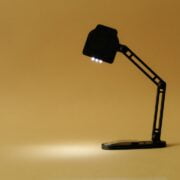
Unlocking the Power of the Schroth Method: A Must-Read Book for Scoliosis Patients
The Schroth Method is a non-surgical treatment approach for scoliosis that focuses on correcting the posture and alignment of the spine through specific exercises and techniques. It was developed by Katharina Schroth in the 1920s and has since been refined and adapted by her daughter, Christa Lehnert-Schroth, and other practitioners. Scoliosis is a condition characterized by an abnormal curvature of the spine, which can cause pain, discomfort, and functional limitations. Finding effective treatment options for scoliosis is crucial in order to improve quality of life and prevent further progression of the condition.
Key Takeaways
- The Schroth Method is a non-surgical approach to treating scoliosis that involves specific exercises and breathing techniques.
- The Schroth Method can help scoliosis patients improve their posture, reduce pain, and prevent further progression of their condition.
- The Schroth Method is based on the principles of biomechanics and aims to correct the imbalances in the spine caused by scoliosis.
- Benefits of the Schroth Method include improved lung function, increased mobility, and better quality of life for scoliosis patients.
- During a Schroth Method treatment session, patients can expect to learn specific exercises and breathing techniques tailored to their individual needs.
How the Schroth Method Can Help Scoliosis Patients
The Schroth Method works by addressing the three-dimensional nature of scoliosis. Unlike traditional exercises that focus on strengthening specific muscles, the Schroth Method takes into account the rotational component of scoliosis and aims to de-rotate and elongate the spine. This is achieved through a series of exercises that are tailored to each individual’s specific curve pattern.
One of the key benefits of the Schroth Method is improved posture and alignment. By targeting the muscles surrounding the spine, the method helps to correct imbalances and asymmetries caused by scoliosis. This can lead to a more balanced appearance and improved overall posture.
Another benefit of the Schroth Method is reduced pain and discomfort. Many scoliosis patients experience pain as a result of muscle imbalances and pressure on the spinal discs. The exercises in the Schroth Method help to alleviate these issues by promoting proper alignment and reducing strain on the spine.
Furthermore, the Schroth Method has been shown to prevent further progression of scoliosis in some cases. While it may not be able to completely reverse an existing curve, it can help to stabilize it and prevent it from worsening over time. This can be particularly beneficial for adolescents with growing spines.
The Science Behind the Schroth Method
The effectiveness of the Schroth Method is supported by research studies that have demonstrated its positive impact on scoliosis patients. One study published in the journal Scoliosis found that the Schroth Method led to significant improvements in spinal alignment and posture in a group of adolescent idiopathic scoliosis patients. Another study published in the Journal of Physical Therapy Science showed that the Schroth Method was effective in reducing pain and improving quality of life in adult scoliosis patients.
To understand how the Schroth Method works, it is important to understand the biomechanics of scoliosis. Scoliosis is characterized by a lateral curvature of the spine, as well as rotation and torsion of the vertebrae. This leads to imbalances in muscle strength and flexibility, as well as asymmetries in posture and alignment.
The Schroth Method addresses these biomechanical issues by focusing on three main principles: elongation, de-rotation, and stabilization. Elongation involves lengthening the spine and creating space between the vertebrae. De-rotation aims to untwist the rotated vertebrae and bring them back into alignment. Stabilization focuses on strengthening the muscles surrounding the spine to support proper posture and alignment.
Benefits of the Schroth Method for Scoliosis Patients
| Benefit | Description |
|---|---|
| Pain Reduction | The Schroth Method can help reduce pain associated with scoliosis by improving posture and alignment. |
| Improved Breathing | By correcting spinal curvature, the Schroth Method can improve lung function and breathing capacity. |
| Reduced Progression of Scoliosis | Studies have shown that the Schroth Method can help slow or even stop the progression of scoliosis. |
| Improved Quality of Life | By reducing pain and improving breathing, the Schroth Method can improve overall quality of life for scoliosis patients. |
| Non-Invasive | The Schroth Method is a non-invasive treatment option for scoliosis, which means it does not involve surgery or medication. |
One of the main benefits of the Schroth Method is improved posture and alignment. By targeting the muscles surrounding the spine, the method helps to correct imbalances and asymmetries caused by scoliosis. This can lead to a more balanced appearance and improved overall posture. Improved posture not only has aesthetic benefits but also helps to alleviate strain on the spine and reduce pain and discomfort.
Reduced pain and discomfort is another significant benefit of the Schroth Method. Many scoliosis patients experience pain as a result of muscle imbalances and pressure on the spinal discs. The exercises in the Schroth Method help to alleviate these issues by promoting proper alignment and reducing strain on the spine. This can lead to a significant improvement in quality of life for scoliosis patients.
Additionally, the Schroth Method has been shown to prevent further progression of scoliosis in some cases. While it may not be able to completely reverse an existing curve, it can help to stabilize it and prevent it from worsening over time. This can be particularly beneficial for adolescents with growing spines, as it can help to avoid the need for surgery or other invasive treatments.
What to Expect During a Schroth Method Treatment Session
A typical Schroth Method treatment session involves a combination of exercises and techniques that are tailored to each individual’s specific curve pattern. The session begins with an assessment of the patient’s posture and alignment, as well as an evaluation of their curve pattern. This information is used to develop a personalized treatment plan.
The exercises in the Schroth Method are designed to address the specific imbalances and asymmetries caused by scoliosis. They typically involve a combination of stretching, strengthening, and breathing techniques. The exercises are performed in various positions, such as lying down, sitting, and standing, in order to target different muscle groups and promote proper alignment.
Throughout the session, the practitioner provides hands-on guidance and feedback to ensure that the exercises are being performed correctly. They may also use props such as straps or foam rolls to assist with certain movements. The goal is to teach the patient how to perform the exercises independently so that they can continue their practice at home.
The Role of Exercise in the Schroth Method
Exercise plays a crucial role in managing scoliosis, and it is a key component of the Schroth Method. Regular exercise helps to improve muscle strength and flexibility, which can help to correct imbalances caused by scoliosis. It also promotes proper alignment and posture, which can reduce pain and discomfort.
The exercises used in the Schroth Method are specifically designed to address the three-dimensional nature of scoliosis. They target the muscles surrounding the spine, as well as the muscles of the ribcage and pelvis. By strengthening these muscles and improving their flexibility, the exercises help to support proper alignment and reduce strain on the spine.
The Schroth Method incorporates a variety of exercises, including stretching, strengthening, and breathing techniques. The stretching exercises help to elongate the spine and create space between the vertebrae. The strengthening exercises focus on specific muscle groups that are affected by scoliosis, such as the deep abdominal muscles and the muscles of the back. The breathing techniques are used to promote relaxation and improve lung capacity.
Diet and Nutrition for Scoliosis Patients Practicing the Schroth Method
In addition to exercise, diet and nutrition play an important role in managing scoliosis. A healthy diet can help to support overall health and well-being, as well as promote optimal bone health. This is particularly important for scoliosis patients, as they may be at a higher risk for osteoporosis and other bone-related conditions.
A balanced diet that includes a variety of fruits, vegetables, whole grains, lean proteins, and healthy fats is recommended for scoliosis patients practicing the Schroth Method. It is also important to stay hydrated by drinking plenty of water throughout the day.
Certain nutrients are particularly important for bone health, including calcium, vitamin D, and magnesium. Calcium is essential for building strong bones, while vitamin D helps with calcium absorption. Magnesium is involved in bone formation and maintenance. Good food sources of these nutrients include dairy products, leafy greens, nuts and seeds, fish, and fortified foods.
Success Stories of Scoliosis Patients Who Have Tried the Schroth Method
There are many success stories of scoliosis patients who have benefited from the Schroth Method. These stories serve as inspiration and motivation for others who are considering this treatment option.
One success story is that of Sarah, a 16-year-old girl who was diagnosed with scoliosis at the age of 12. She had a 30-degree curve in her spine and was experiencing pain and discomfort on a daily basis. After starting the Schroth Method, Sarah noticed significant improvements in her posture and alignment. Her pain and discomfort also decreased, allowing her to participate in activities that she had previously been unable to do.
Another success story is that of John, a 45-year-old man who had been living with scoliosis for most of his life. He had tried various treatments, including physical therapy and chiropractic care, but had not experienced any significant relief. After starting the Schroth Method, John noticed a gradual improvement in his posture and alignment. His pain and discomfort also decreased, allowing him to resume activities that he had previously been unable to do.
Testimonials from patients and healthcare professionals further support the effectiveness of the Schroth Method. Many patients report improvements in posture, reduced pain and discomfort, and increased quality of life. Healthcare professionals also praise the method for its ability to address the three-dimensional nature of scoliosis and provide long-term benefits.
Frequently Asked Questions About the Schroth Method
There are several common questions and concerns about the Schroth Method that are frequently asked by scoliosis patients and their families. Here are some answers and explanations from experts in the field:
Q: Is the Schroth Method suitable for all types of scoliosis?
A: The Schroth Method can be beneficial for various types of scoliosis, including adolescent idiopathic scoliosis, adult degenerative scoliosis, and neuromuscular scoliosis. However, it is important to consult with a qualified practitioner to determine if the method is appropriate for your specific condition.
Q: How long does it take to see results with the Schroth Method?
A: The time it takes to see results with the Schroth Method can vary depending on the individual and the severity of their scoliosis. Some patients may notice improvements in posture and pain within a few weeks, while others may take several months to see significant changes. Consistency and commitment to the exercises are key factors in achieving results.
Q: Can the Schroth Method replace the need for surgery?
A: While the Schroth Method can be effective in stabilizing and improving scoliosis, it may not be able to completely reverse an existing curve. In some cases, surgery may still be necessary to correct severe or progressive curves. It is important to consult with a healthcare professional to determine the most appropriate treatment plan for your specific condition.
How to Get Started with the Schroth Method: Tips and Resources
If you are interested in trying the Schroth Method for scoliosis, here are some tips for getting started:
1. Find a qualified Schroth Method practitioner: Look for a healthcare professional who has been trained in the Schroth Method and has experience working with scoliosis patients. They should be able to provide a thorough assessment and develop a personalized treatment plan.
2. Practice regularly: Consistency is key when it comes to the Schroth Method. Aim to practice the exercises at least three times a week, if not more. This will help to reinforce proper alignment and promote muscle strength and flexibility.
3. Seek support: Joining a support group or connecting with other scoliosis patients who have tried the Schroth Method can be helpful in staying motivated and sharing experiences. Online forums and social media groups can be great resources for finding support.
4. Educate yourself: Take the time to learn more about scoliosis and the Schroth Method. There are many books, websites, and online courses available that provide valuable information and resources.
The Schroth Method is a non-surgical treatment approach for scoliosis that focuses on correcting the posture and alignment of the spine through specific exercises and techniques. It has been shown to be effective in improving posture, reducing pain and discomfort, and preventing further progression of scoliosis. The method is supported by research studies and has been praised by both patients and healthcare professionals.
If you are a scoliosis patient, it is worth exploring the Schroth Method as a treatment option. Consult with a qualified practitioner to determine if the method is appropriate for your specific condition. With regular practice and commitment, you may be able to achieve significant improvements in your posture, pain levels, and overall quality of life.
If you’re interested in learning more about the Schroth Method and its benefits for scoliosis patients, you may want to check out this informative article on Wave Magnets’ website. The article provides a comprehensive overview of the Schroth Method and how it can help improve posture and reduce pain for individuals with scoliosis. To delve deeper into this topic, click here: Schroth Method: A Comprehensive Guide.
FAQs
What is the Schroth Method?
The Schroth Method is a conservative treatment approach for scoliosis, a condition characterized by an abnormal curvature of the spine. It involves a series of exercises and postural corrections designed to improve spinal alignment and reduce pain.
What is the Schroth Method Book?
The Schroth Method Book is a comprehensive guide to the Schroth Method, written by a certified Schroth therapist. It provides detailed instructions and illustrations for the exercises and postural corrections involved in the method, as well as information on scoliosis and its treatment.
Who can benefit from the Schroth Method?
The Schroth Method can benefit individuals with scoliosis of all ages and degrees of curvature. It is particularly effective for those with mild to moderate scoliosis who are looking for a non-surgical treatment option.
Is the Schroth Method Book suitable for self-treatment?
While the Schroth Method Book provides detailed instructions for the exercises and postural corrections involved in the method, it is recommended that individuals seek guidance from a certified Schroth therapist before attempting to use the book for self-treatment.
Where can I find a certified Schroth therapist?
Certified Schroth therapists can be found through the Schroth Best Practice directory, which lists therapists who have completed a rigorous training program in the Schroth Method. They can also be found through scoliosis advocacy organizations and through referrals from healthcare providers.


















